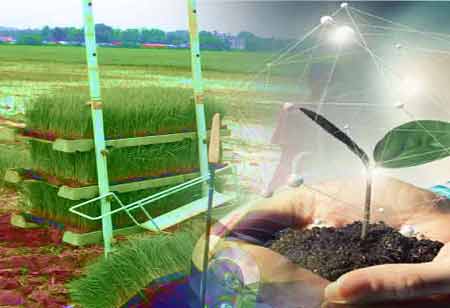Thank you for Subscribing to Agri Business Review Weekly Brief
Chemical Seed Treatment to Dominate Market
Seed treatment is the administration of chemical or biological solutions to seeds, either to control disease or insect attacks or to improve seed viability during the germination process by physical, chemical, or biological treatments.

By
Agri Business Review | Friday, December 30, 2022
Stay ahead of the industry with exclusive feature stories on the top companies, expert insights and the latest news delivered straight to your inbox. Subscribe today.
A seed treatment is the application of chemicals or biological solutions to seeds, either to control pathogens or pests or to enhance seed viability during germination.
FREMONT, CA: Seed treatment is the administration of chemical or biological solutions to seeds, either to control disease or insect attacks or to improve seed viability during the germination process by physical, chemical, or biological treatments. Seed treatment markets can be broadly divided into seed protection and improved treatments.
The seed treatment market represents a minute portion of the worldwide agrochemical industry. However, the industry has been expanding rapidly because of the increased need for sustainable agriculture practices in industrialized nations. Leading manufacturers are expected to invest heavily in product development research, such as integrating biological and chemical components, over the next five years, resulting in market growth.
According to MarketsandMarkets, the Seed Treatment Market will increase from USD 6.1 billion in 2022 to USD 9.2 billion by 2027, expanding at a CAGR of 8.3 percent over the projected period.
Chemical seed treatment accounts for the largest share of the market
Chemical seed treatment uses chemical pesticides, such as fungicides, insecticides, or a mixture of both, which, when applied to seeds, prevent seed-borne or soil-borne pathogens. Additionally, it is utilized to manage insect pests in the field. Chemical seed treatment protects seeds during storage and after planting against seed rots and other diseases. It serves the purposes of seed disinfection, disinfestation, and protection, dependent on the treatment's characteristics and objectives.
Difficulty: New entrants who are disorganized and have a low profile-to-cost ratio
New technology, such as breeding techniques, creates development prospects for new market entrants, some of which undermine the expansion of the industry's dominant companies. New entrants to the market lack brand awareness, but their seed prices are far lower than those of established competitors, which impacts the market share of the prominent market participants. For domestic players, the availability of raw materials for seed goods is crucial. However, domestic competitors concentrate on locating distributors and adding a layer to the value chain, which either diminishes profit margins or raises the product's price. The competition with domestic competitors and the availability of new, less expensive breeding technologies are anticipated to pose the greatest obstacles for the market leaders in seeds. Brand loyalty is also one of the most significant problems impeding the global market expansion for seed-coated with novel technologies.
Limitation: treated seeds have a limited shelf life
Seed treatments can protect seeds and seedlings from low-to-moderate insect attacks during plant germination and establishment. Delays in crop damage and pest establishment can be reduced, although the length of protection may be limited. Due to the short shelf life of treated seeds, seed germination and vigor fall significantly, especially in seeds like soybean.
In microbial inoculant seed treatments, critical problems such as improper inoculant formulation and limited shelf life can hinder the widespread application of seed coating solutions. Formulations substantially impact the viability of microorganisms during product development, storage, and application. The formulation's physical and chemical qualities influence the microorganisms' survival ability. Maintaining the vitality of coated microorganisms in seeds might take time, reducing their shelf life.
The majority of farmers throughout the world utilize liquid formulations for a variety of reasons, including the convenience of handling and improved seed distribution. Consequently, the liquid formulations segment is anticipated to lead the market during the forecast period.
The seed coating segment is expected to lead the seed treatment market by application technique in 2022. The seed coating technology treats large quantities of seeds at significantly cheaper costs.
In contrast, the seed dressing approach is favored as an appropriate application method in industrialized nations worldwide due to the rising development of seed dressing products. Even if this technique allows for uniform pesticide administration, newer and more effective controlled-release technologies can be developed to benefit the worldwide agricultural sector.





